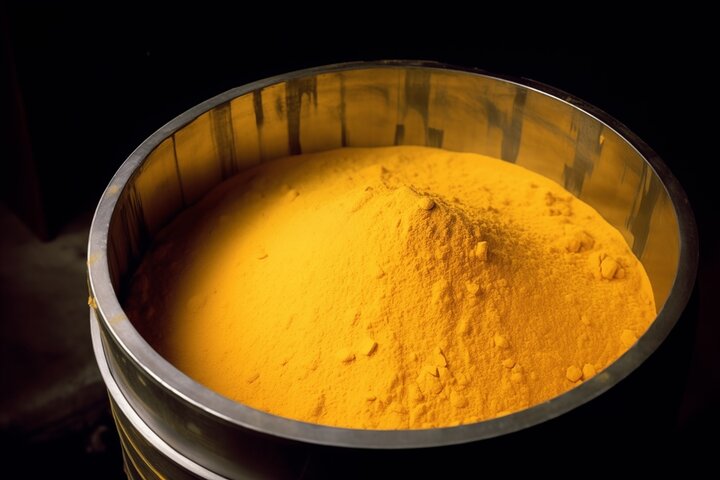CIO, Andrew Clifford, discusses some of the major themes underlying global markets today, particularly the challenges faced by China in its economic transition; Ian Carmichael, consumer sector team leader, highlights some of the investment opportunities driven by the emerging Chinese ‘tourist’ consumer.
Andrew Clifford, CIO and Co-Portfolio Manager, Platinum International Fund:
Over the last couple of years, we have discussed at length how investors craving certainty had been driven them toward safe harbours such as fixed interest and dividend paying stocks. But even in these safe harbours we have seen setbacks. Most sovereign bond markets have seen yields move higher. In the US, high yield or junk bonds have been sold off as have a range of dividend type vehicles, the so-called ‘yield cos’, created typically from utility type assets to satiate investors need for income. Even the Australian banks have not been great performers over this period.
Yet despite these quite dramatic falls in some parts of the market, global equity indices by and large have rebounded nicely but driven by an ever smaller group of stocks. This is highlighted well by the so called FANG stocks in the US, Facebook, Amazon, Netflix, and Google, which today are 16% above their July highs while the S&P500 is a few per cent lower. This pattern of investor behaviour is concerning as it is hard to see how one will make money by investing in an ever narrower group of stocks that are viewed as being perfect.
How do markets break out from this pattern? A broad global economic recovery would likely do the trick, but given the level of debt in the world’s major economies is still at all time highs, this remains problematic. In the meantime, investors need to focus on individual stocks that can make progress independently of this debt overhang.
If one thinks about the obverse side of the debt issue and examines what this build-up in debt was financing, these are the areas to avoid. For example, artificial debt driven structures like the yield cos mentioned earlier or companies that have used debt aggressively in buybacks, would be assets we would treat with great suspicion. In the real world, there are many areas where debt has been used to create significant overcapacity. During my recent trip to China, in a meeting with a senior executive of one of the major steel companies, the numbers he shared on the steel industry were extraordinary. Steel making capacity will peak at over 1.2 billion tonnes against peak production of just over 800 million tonnes. His view was that China’s long-term demand for steel was of the order of 500-600 million tonnes pa. Assuming 100 odd million tonnes of exports (incidentally the amount of steel the US uses each year), the industry would still be left in a state of massive excess capacity. Simply, this industry and its suppliers, and not just in China, but globally, is destined to see sub par returns to both debt and equity investors for many years to come. Share prices may have adjusted significantly, but without the prospect of a rebound in demand, we think they are likely to languish for some time. Of course, this capacity story can be told in many other industries that benefited from the debt boom, from a range of commodities, real estate, and even education services.
As we have noted previously, there are many positive developments across a range of industries which is being driven by innovation. An interesting example is how ride-share services such as Uber have the potential to change the dynamics of the auto industry. In China, where these services have taken off, Didi (the leading ride-share player and part owned by TenCent) and Uber (part owned in China by Baidu) are providing 10 million rides per day. In an immature auto market, people are considering whether owning a car is worthwhile when a ride can be reliably found 24 hours a day. A ride share vehicle is typically being driven 8 hours a day versus 90 minutes for a purely private vehicle, meaning ultimately a lot fewer cars will be sold, not great for an industry that again has plenty of capacity. Also higher utilisation of individual vehicles will push the market far more quickly toward electric vehicles. Similarly, the likes of AirBnB are doing the same for hotel rooms, now accounting for mid-teen percentages of available room nights in major destinations such as New York, London, and Paris.
Obviously many of the stocks in these areas of innovation, which include not just e-commerce and internet properties but also biotech, electric vehicles, and renewable energy, are well understood and highly priced. However, some due to lingering concerns about their business model, several are available to buy at attractive prices. Included in our portfolio are the likes of Alphabet (the renamed Google), Paypal, Tencent and Baidu.
There is another category of companies in-between these innovators and those drowning in excess capacity, which we are referring to as the “new cyclicals”. These companies typically still have a strong position in their business with respect to their market position or technology and do have some pricing power on account of their differentiated products. However, very often while their markets are expected to grow, they are growing at mid-single digits at best through time. Included in our portfolio that fit in this category are Cisco, Intel, Ericsson, Samsung, and Corning. Each of these companies remain available at attractive P/Es and are are throwing off significant free cash flow. Our European banks such as Intesa, Lloyds and Erste also fit in this “new cyclicals” category. Strong banks in their respective markets, they have dealt with the bad debts and other problems from the 2008 period, are now moving toward paying out significantly bigger dividends over the next 2 to 3 years. We think that these type of stocks bought at the right time will provide investors with good returns.
Currency
We have had a very significant weighting to the US dollar in recent years, which has made a positive contribution to performance. As we move toward the beginning of rate rises in the US, it is likely that we are coming toward the end of the US dollars extraordinary rally. Of course, the alternatives are far from attractive in most respects, nevertheless the Japanese yen stands out as significantly undervalued, so we have now removed our yen hedges and have an exposure of 10%. The Australian dollar we would think should still be avoided on a longer term view. However, the Chinese slowdown and subsequent sell-off in commodities has put the Australian dollar under immense selling pressure, so the likelihood of a rebound we think is good. As such we have taken our Australian dollar exposure from essentially 0% to 10% and possibly may go a little higher yet.
Ian Carmichael, Consumer Sector Investment Analyst:
Chinese 'Tourist' Consumer
As a consumer analyst for Platinum, our job is to uncover profitable investments in consumer companies across the globe. Undoubtedly the most important change over the past decade for the companies that we cover has been the rapid growth in discretionary income of Chinese consumers.
We have written previously about the opportunity in Chinese companies that sell products and services on the mainland. Such companies in our portfolios include China Mobile, the insurers - China Pacific and PICC, the fast growing internet companies Baidu and Tencent and Chinese white liquor companies such as Kweichow Moutai.
But less appreciated is the impact of the travelling Chinese consumer.
The number of outbound Chinese travellers is growing quickly from 30 million journeys in 2005 to 120 million last year. That is a four-fold increase in just a decade.
The reason it matters is because when the Chinese travel they shop a lot. Chinese tourists to either the US or Europe spend on average $2500, per person, per trip. This figure does not include expenditure on hotels, restaurants or transport. This is purely retail – money spent on items like clothes, handbags and cosmetics.
It is entirely logical that the Chinese would spend such a high amount on holiday shopping for two reasons:
- Firstly counterfeiting is rife in China. If you desire a Rolex watch it is a lot more comforting to transact in the Rolex store in Geneva than it is from a department store in Shenzhen.
- Secondly prices of many valuable goods produced outside of China are a lot more expensive on the Mainland in part because of high import taxes. Anything from French handbags to Australian baby formula is cheaper to buy overseas and so the Chinese will typically defer purchasing until they travel. By way of example, prices of luxury goods in China are typically 30% higher than those in Europe.
Outbound Chinese tourism is, however, a relatively new phenomenon. Workers’ rights to annual leave was only established in 1995 and it wasn’t until 1997 that the Chinese Government officially allowed foreign tourism for personal pleasure beyond the few existing Asian destinations that had approval at the time.
And because it is still in its infancy it looks a little different to Western tourism.
To date most first trips outside of China were taken with tour groups that advertised low upfront costs, but came with an often undisclosed requirement to purchase goods each time the tour stopped at a shop. Some call this hostage tourism because it is not uncommon for the doors to be locked until every last tourist has bought something from the store.
Despite the growing popularity of self-directed tourism and the recent outlawing by the Chinese government of certain hostage tourism practices, tour groups still remain the predominant form of tourism. And with 80% of surveyed Chinese tourists saying that shopping is vital to their holiday plans, shopping remains the principal activity of most trips.
So given that we have rapidly growing numbers of outbound tourists who spend a lot of money on retail when they travel it would obviously help if we could predict in advance where they will travel. In this regard the two most important factors are exchange rates and visa requirements.
Until recently Hong Kong has been the main beneficiary, but in recent year’s hostility towards mainland tourists combined with depreciating Yen and Won currencies have redirected tourist flows within Asia to Japan and Korea.
Outside of Asia, Europe has benefited at the expense of North America because of currency weakness and convenient multiple visa rules for Chinese tourists. Tourist trade in France has been particularly strong with the French now representing 20% of overall global travel retail and until recently Chinese duty-free shopping in France was growing 92% year on year.
The French are also particularly sophisticated in how they have adapted their businesses to serve their Chinese clientele. We met with the management of Galleries Lafayette, the famous department store in Paris, earlier in the year and learnt that they categorise their customers in one of three ways: the French, the Foreigners and the Chinese.
- French customers enter the store via a door connected to the metro system below the building;
- European and American tourists come in off the street as they walk to the store from their hotel or are dropped by taxi; and the
- Chinese arrive by buses and have their own entrance at the side of the store
Each door has a customised product offering depending on the nationality. For instance the Chinese part of the store has numerous displays of expensive Swiss watches, while the French predominantly see makeup and cosmetics on display as they enter.
To give a sense for how important the Chinese client is to Galleries Lafayette, they make up 10% of customers by number but around one third by value. The department store is at its physical capacity – they are able to fit 400 buses of Chinese tourists a day and they fill this quota daily.
With regards to Platinum’s portfolios we would like to highlight two stocks that are particular beneficiaries of the aforementioned trends in Chinese tourism.
The first is Kering which is a French luxury conglomerate that owns storied European brands such as Gucci and Saint Laurent. Recalling that tourist flows will change from country-to-country depending on currencies and visa rules, when owning luxury brands we would prefer to own those that already have in place retail coverage across all continents. Luxury brands will often wait years, sometimes as long as a decade, to obtain the perfect retail location in a city. Currencies and visa rules unfortunately change a lot faster than this which means that stores must be built in advance of changes rather than in response to them. The Kering group has 1200 stores located in major cities and airports around the world so no matter where tourists travel they will always be able to buy a new pair of Gucci loafers.
The second company we would like to highlight is Carnival, the cruise line company. Carnival first entered China in 2006 and for the subsequent five years ran a very modest fleet of three relatively old ships that they struggled to fill on a year-round basis. The situation is very different today with the ships fully booked all year around and with ticket prices in China sold at a premium to US and European prices.
This year, one million Chinese will take a holiday on a cruise ship. This compares with one million Australians and 12 million Americans. Given these numbers it isn’t hard to see the number of Chinese cruise trips being a multiple of the current number within a few years. By 2017 Carnival will have eight ships dedicated to China.
There still yet remains an opportunity to customise the boats to local tastes. This means changing the mix of retail and gambling offered while also dedicating less space to amenities such as poolside sunbeds which aren’t as popular with the Chinese. When competitor Royal Caribbean recently customised their first Chinese vessel they found that spend per passenger was 10% higher than they had achieved anywhere else in the world.
As currencies, regulations and tastes change, there will be local winners and losers, but with just 5% of the Chinese population in possession of a passport this is an investing theme that will be important for many years yet to come. Our task is to capture this by finding attractively priced stocks exposed to it.
DISCLAIMER: The above information is commentary only (i.e. our general thoughts). It is not intended to be, nor should it be construed as, investment advice. To the extent permitted by law, no liability is accepted for any loss or damage as a result of any reliance on this information. Before making any investment decision you need to consider (with your financial adviser) your particular investment needs, objectives and circumstances. The above material may not be reproduced, in whole or in part, without the prior written consent of Platinum Investment Management Limited.


